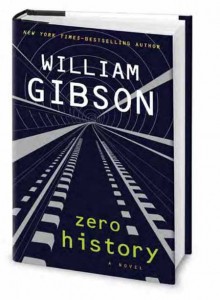
If you’ve never read William Gibson, it can be a chore to get going. He takes the adage of “show, don’t tell” to an extreme, not really describing the worlds he creates as much as throwing you in to the middle of them. He invents jargon and concepts that he throws at you as if everyone knows what they are. It is only by reading, by immersing yourself in his world, that you can learn what he is saying. But, the end is always worth it.
The Peripheral is another such story. As with all of his books, Gibson creates a near-future world, taking some of our current trends in technology and society to an extreme. Here, he creates two worlds that somehow communicate with one another through devices, through peripherals, that are essentially robots that people temporarily inhabit, giving them a new identity — a new body, a new gender, a new experience — at least for a while. Understanding the relationship between these two worlds is part of the story, so I won’t give it away, but it is another intriguing world that Gibson has built. He creates concepts that are alien but built upon our own experiences that are ingenious. For example, describing how two characters secretly talk to one another:
Whatever randomly synthetic language the one spoke, the other understood. Never the one thing long enough to provide a sufficient sample for decryption.
That is, these two characters speak in almost random sounds — now like birds, the next in grunts — that only they can understand. And they don’t speak in any one long enough for anyone to figure out what they are saying. The story is filled with these technological marvels that flesh out Gibson’s futuristic visions.
The main characters, Flynne and Nick, find themselves trying to save Flynne’s world from some truly nasty people who’s only concern is power. These people almost seem like evil incarnate, but, really, what is evil? Such people don’t view themselves as evil. Gibson touches on the nature of evil: “That evil wasn’t glamorous, but just the result of ordinary half-assed badness, high school badness, given enough room, however that might happen, to become its bigger self.” He also touches on climate change and the dangers it poses to the world, and how governments manipulate our every day lives.
I always find Gibson entertaining and thought provoking. His worlds are both alien and familiar, with technological marvels that you both covet and are repulsed by. I look forward to the next one.
